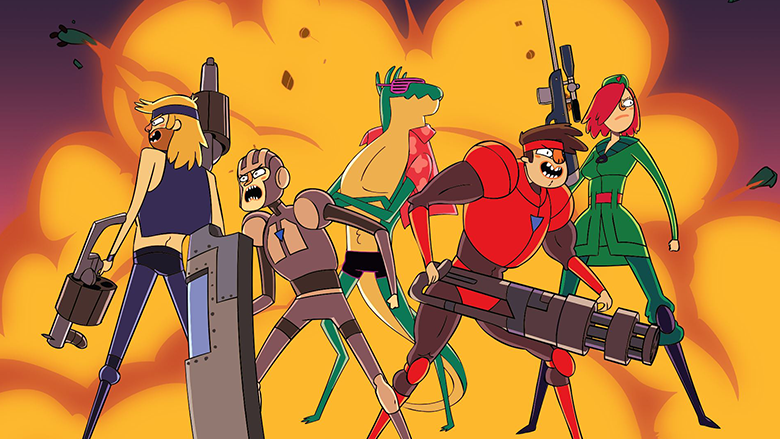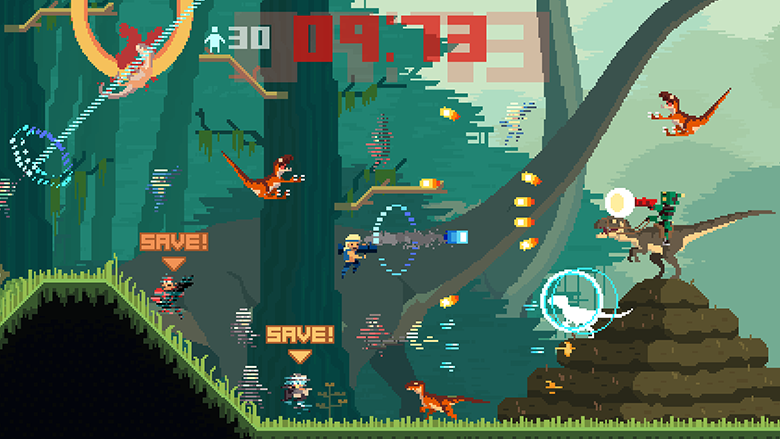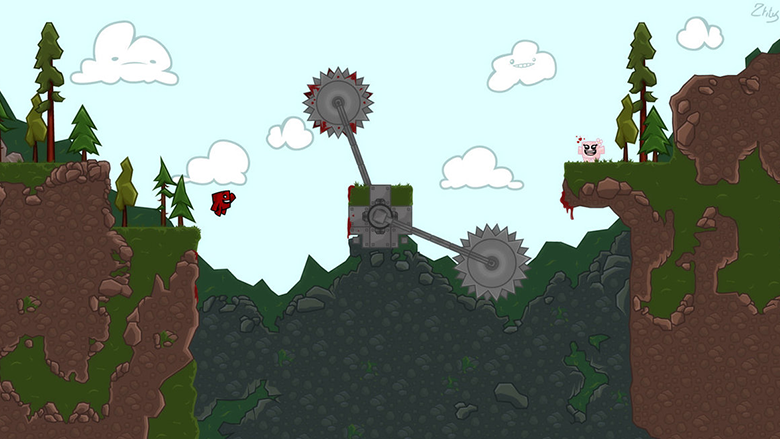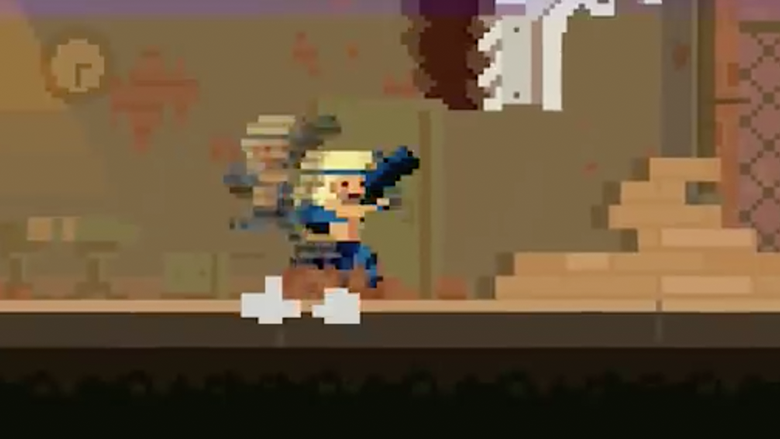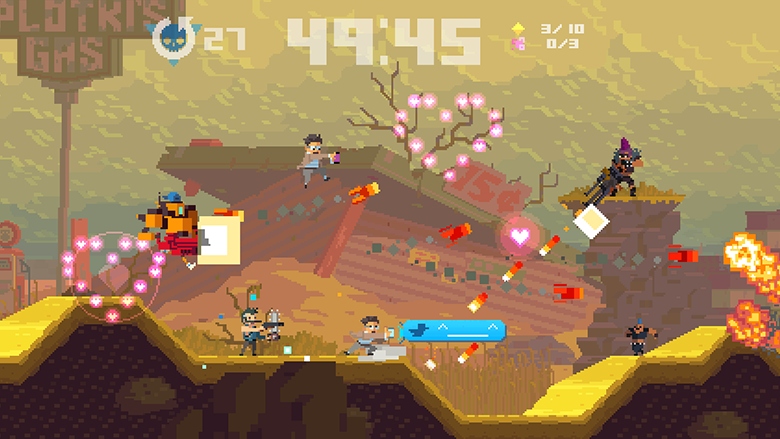Mark Brown, indie developer and editor of the Pocket Gamer resource, explained why the “feeling of the game” is a necessary component of a platformer or action and how to strengthen this feeling within the video cycle Game Maker’s Toolkit. With the author’s permission, we have translated the material and prepared a text version.
In the image: art for the game Super Time Force
There is one game on the iPhone called Random Heroes. This is a platformer where you need to run and shoot. He is, in principle, not bad. Has the right to exist. But it feels dull – it’s the equivalent of a cabbage patty in the world of video games. It doesn’t look funny at all.
Now compare this game with Super Time Force. There’s a completely different gaming experience. The game is lively, the controls are responsive – there are already sparks in all directions, as if someone missed the discharge through the Xbox. Much more fun.
In my opinion, here is a great example of how the developer – in our case, the Capy studio – brought to the maximum that elusive component, which is called the “sense of play”.
Super Time Force
This is mostly an abstract, invisible component, but when you create a platformer or an action game, it is very important to apply it correctly. As soon as the player takes the joystick or presses the button, he immediately feels whether it is in the game or not. This component makes itself felt from the first seconds of gameplay, accompanies every moment of the game and is hidden in everything.
To understand whether this component exists or not, you need to imagine what the feeling of the game will be if you forget about glasses, plot, graphics, music and a nice level design. If you remove all the baits, will the game remain interesting?
Super Mario series – yes. In Mario 64, the character is very cool to control – he jumps so cheerfully, jumps, falls forward with his belly, that even if there is nothing around, you can just wander back and forth for hours. They say that at first the game looked like this – a character in an empty room. And that Shigeru Miyamoto (Shigeru Miyamoto), before starting the rest of the game, just honed every move of Mario for a couple of months.
The feeling of the game here lives in the movements and jumps, in the feeling of the gravity of the character and plays a decisive role. In fact, the level design and enemies in Mario 64 exist only to enhance this feeling. Levels allow Mario to use a variety of movements and stimulate the player to hone the skill of controlling the character.
There are other developers who have achieved the same. For example, Super Meat Boy is cool – very simple and dynamic. But there are also many such platformers, where inaccurate control and a heavy character spoil everything.
Super Meat Boy
Similarly, the best action games are the ones that are fun to play, even if you just endlessly shoot at enemies in an empty room. But many games lack such energy.
If we talk about specific tips for the game as a whole, then I don’t have them. Each genre needs its own approach. I’m not sure that the advice “everyone be like Shigeru Miyamoto” will help here in any way. But there are a bunch of little tricks that can be applied at the final stages of development. They will make the feeling of the game much better. I shamelessly stole these tricks from Vlambeer, Cactus and Grapefrukt.
The first piece is a shaking screen, and Vlambeer is the king of this chip. In all the games of this studio, the screen shakes like crazy, you just have to start shooting, run into an enemy or bite into a fish. This makes you feel satisfied, and there is a feeling that you are interacting with the game world.
Vlambeer also likes to slow down the game a little for half a second when a player hits an enemy or kills him – to enhance the effect. In fighting games, this is also common. For example, in Street Fighter, the screen shakes when a blow hits the target. Code of War and Zelda did the same.
Everything that helps the player to understand that he has hit the enemy works. I’m talking about light flashes, knockdowns, blood splashes, some special animation, funny sounds. All this gives the player feedback and improves the “feeling of the game”. Plus, there are effects that create the feeling that the character is part of the game world. For example, dust particles that rise when the hero falls to the ground, or the recoil from a shot.
Super Time Force
Sound effects also contribute. They should be loud and powerful. You can randomize a set of sound effects so that they do not repeat. Or, to enhance the pleasure of a successful combo, you can borrow a technique with an increasing tonality from Mario and Peggle.
The next tip is to use the camera creatively. In Luftrausers, the camera does not follow the plane – it moves in such a way as to give an action from the advantageous side and show the player an approaching enemy. And in Hotline Miami, the camera moves back and forth to make it clear where the character is going.
And also – let everything be big. That is, right very big. Bullets from the head, like in Nuclear Throne, each explosion from the house, like in Super Time Force, blood fountains, like in Hotline Miami.
By the way, Hotline Miami has a consistency that many other games lack. Bodies and streaks of blood after the “cleaning” of the level remain in their places until you leave the location. Because of this, every time you look back with a slight nostalgia at the massacre that you staged, and there is a feeling that the victory was not easy.
In the end, this component – some call it “pulp” – arises from the fact that, as it were, you multiply by two what constitutes the very essence of the game. If you have a shooting game, then let the weapon have a hell of a recoil, the shooting speed is frenzied, and the camera shakes from every hit. And if it’s about jumping, then let the character sausage, and the camera itself remains stationary, because it’s more convenient to land that way.
Super Time Force
The feeling of the game is something that can kill months, if not years. So I doubt that in a five-minute video I can tell you the secret of how to make the game cool. But I hope that there is something useful here about how to make the action more interesting in general, and to ensure that every detail in the game works for the main idea of the author. Follow my advice, and then, I would like to hope – I would really like to! – I won’t have to go through so many rotten and dull games for work.
Source: Mark Brown’s blog
Translated by Irina Smirnova

